In 2007, government scientists predicted permanent drought in the southwest US
according to a sobering new study, the Southwest’s aridity is about to get worse. Published in the April 9 issue of Science, “Model Projections of an Imminent Transition to a More Arid Climate in Southwestern North America” predicts that climate change will permanently alter the landscape of the Southwest so severely that conditions reminiscent of the Dust Bowl days of the 1930s
Compare current drought conditions on the left with November 1934 on right.
Almost all of Texas is wetter than normal. In a week or two, the US will be nearly drought free.
In 2008, Australian government scientists announced the permanent drought for south-east Australia.
None of New South Wales is experiencing drought.
Government climate scientists like those meeting Paris don’t understand the climate and have no idea what the future will hold. They are simply political prostitutes paid to spread fear.
Forty years ago, America’s most prominent experts agreed that global cooling made our future grim.



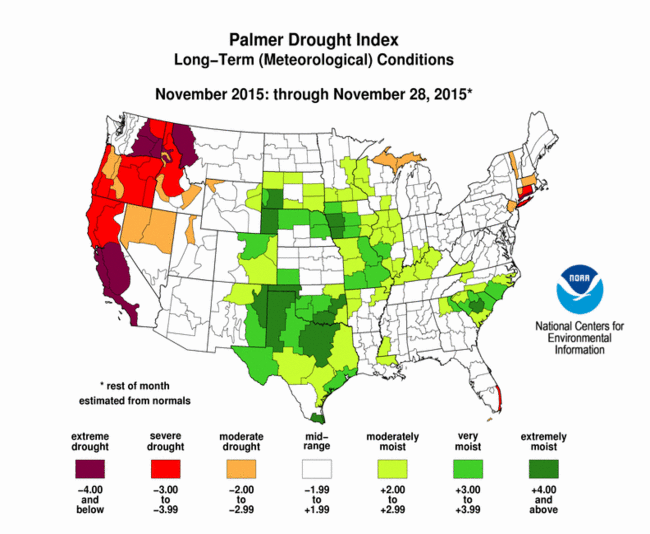
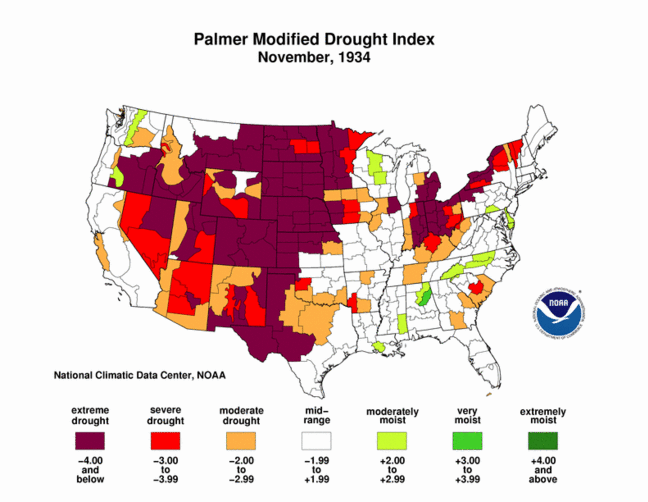
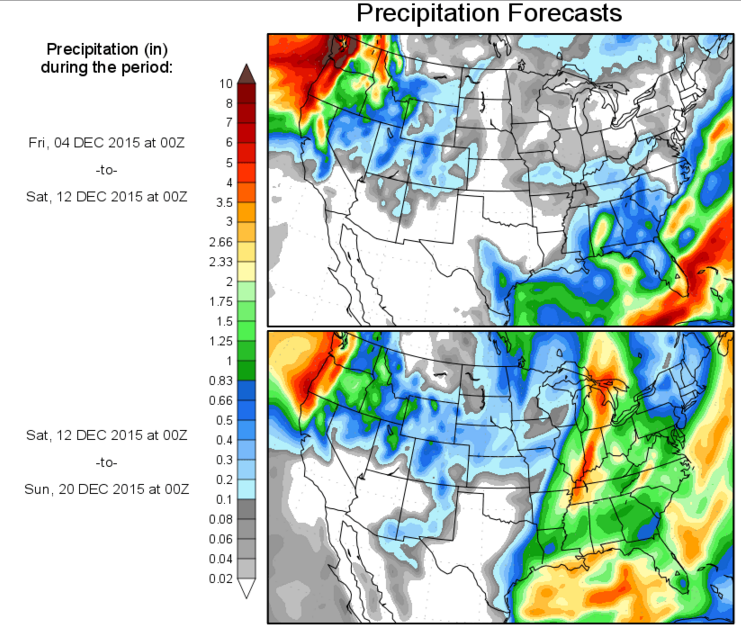
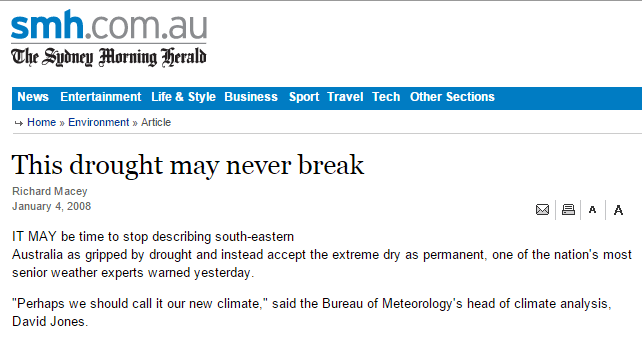
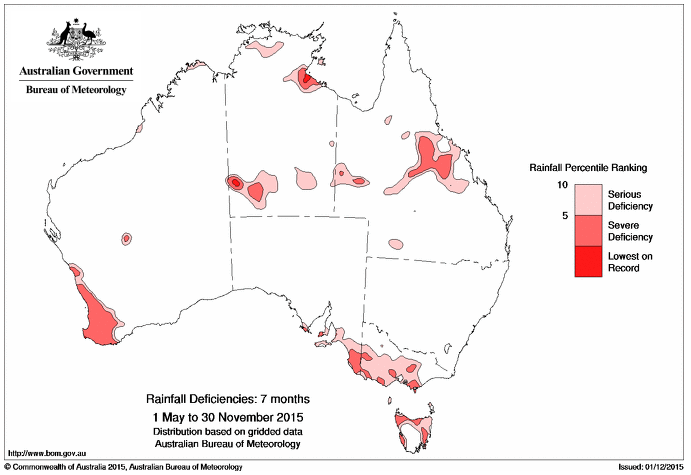


Even more ridiculous, “drought” is usually defined as being in the lower 10th percentile of historic conditions. One would expect that even during completely normal times, somewhere around 10% of a country would be in a drought.
The problem with making predictions, is eventually the future will arrive. Prophets, Psychics and other scammers count on getting paid (or getting you to do something) before the predicted events happen.
With climate change, at some point the future shows up. But will it matter to the person making the prediction?
My local has had the 7th wettest year since measurement began, yet the PDI shows it to be in the midrange. Something ain’t right here.
Yes, there are some temporary problems in parts of CA. More extreme and lengthy droughts have occurred before. Part of a current problem is due to foolish water usage and not adjusting to the situation.
This testimony to drought is illustrative of the continual scientifically wanting current climate methodology. The rule is publish or perish. As a consequence a fundamental tenant of science is abandoned. That tenant is that on any issue, one must diligently seek to find all pertinent history of that which is to be published.
Yes, there have been climatic changes in the short term, There always are. There always will be. Climatic events are cyclical.
Here in southern MN the lakes are not frozen. Unusual yes. A first time event, no.
Only problem is us ‘Grumpy Old Men’ can’t get our fish houses out. 🙁
Southern California has had too many people for the naturally arid land it is. Lucky to have gone this far without much worse drought happening according to the long term records. It’s really that simple in the final analysis setting water management issues aside. In the final analysis it’s either depopulate, desalinate, or live with the threat of a really serious drought that will be worse than what has been happening.
Hey rah! Yes, exactly. Look at so much of the American southwest. Build cities with millions of people and locate them in the desert — then complain that there is not enough water! Madness!
Los Angeles is perhaps the worst. Build a city next to the biggest ocean on the planet and then do NOT invest in desalination technology.
Small cities along the Colorado River are doing just fine, thank you. If you are eating lettuce, broccoli, or cauliflower this winter chances are it comes from Yuma or Maricopa counties, even if it is marketed by a California company. Even Phoenix and Tucson aren’t suffering particularly. However, the population growth in Arizona is restricted because only 17 percent of the state is available for private use. Drought problems occur mostly along the California coast. Ignore the drought colors on the rest of the Southwestern States. They are permanently semi-arid, yet produce massive amounts of agricultural products through efficient use of river water. Heavy rains are always catastrophic events in these states.
Hey Ernest! For any location, the question is “how much is water worth here?” Once the government is involved the question becomes, “how much can we get water for if we force other people to help pay for it?” With no governmental coercion, water prices in Los Angeles would be a more accurate reflection of “how much is water worth here?” Maybe Los Angeles would have stayed a smaller town if the people who live there had to pay a fair price for water. Maybe other towns would have grown larger if the people there had better access to their own local water instead of shipping it across the state.
Is desalinated water too expensive? Not if you are consuming more water than your area has and you are willing to pay extra. Once the governmental coercion stops, the misallocation of resources stops. People will buy (and consume) water based on a realistic reflection of how much effort it takes to produce.
In Yuma, AZ, a a massive plant was built decades ago to give Mexican agriculture less salty water from the Colorado river. It failed mainly due to lack of knowledge about scaling up from smaller projects. The government spent over a hundred million dollars refurbishing it and operated it for over a year around 2011. It was shut down as maintenance problems mounted. The cost of the water would have been unacceptable. If the West Coast is going to use desalted water, they should call in the Israelis who are operating three plants successfully. Keep the federal government away from the projects.
Brisbane, Australia’s experience with desalting plants is worth noting, also. Mostly it was a 4 billion dollar boondoggle with one plant seeing light use for agriculture and the other one being a maintenance nightmare to prevent deterioration of an expensive asset. The drought that was supposed to be the new climate went away in a huge way and the plants aren’t needed. Currently the plants cost the Queensland government a million dollars a week to service debt and keep the plants maintained.
The Brisbane, Sydney and Melbourne desal plants were, and still are, an utter waste of money. The Adelaide one is ticking over at about 10% capacity and providing a small augmentation of the water from the Murray River
The Perth desal plants are, however, keeping Perth alive and provide base load water.
The rainfall and water storage options over there are just sufficient for an expanding city.
iirc the Perth region now have 2 operational desal plants, with another one on the way.
http://www.perthnow.com.au/news/western-australia/double-capacity-for-desalination-plant/story-e6frg13u-1226560113527
Here’s the new one.
http://www.watercorporation.com.au/water-supply-and-services/ongoing-works/onslow-water-services
hmmmm.. very interesting
http://www.co2science.org/articles/V18/dec/a3.php
The BOM/Warmista forecast for Australia in December 2015, (http://www.bom.gov.au/jsp/sco/archive/index.jsp?map=rain&outlook=median&area=national&period=month1&year=2015&month=11&day=19) is for widespread rain above average. El Nino periods usually cause drought in Australia, but this El Nino is not doing that.in Australia. The dams are full, in defiance of Flannery’s Warmista forecast.
Still bone dry here in southern California. This is the driest autumn I can remember here, and not a drop in the forecast for at least another week. But that doesn’t stop them from telling us daily that some little Spanish boy is about to drown us all. Who is this Nino, anyway?
So far, the latest, biggest weather story in human history, has been a complete flop here in the land of Fruits and Nuts.
In most past El Niños, the waters around Australia have been cool. This time around, they are warm. This El Niño has been different in character than the past ones. Now that NOAA has announced its the worst ever due to a small record high in the 3.4 region, the other regions are cooler than in the past and the effects have been less, so far, than expected. Joe Bastardi at Weather Bell thinks the Pacific will turn cold starting late next year and that will have a net effect on winters in the Northern Hemisphere. Meanwhile, the SSTs in the niño regions have probably peaked already, and will be dropping steadily.
Previous El Nino’s that we have had the ability to study closely have all been during a period of strong solar activity. This one is the first we have seen during a ‘sleepy’ solar period. Will be interesting to see how it pans out.
Since when have any of their Models been accurate. A Model based on a bad Model is a bad Model.
Reblogged this on Climatism and commented:
Climate change alarmists live in a parallel universe, devoid of historical reference and a basic understanding of cyclical climate fluctuations.
“Government Scientist Permanent Drought Update”
I would just like to point out that I don’t believe there are government “scientists”. There may be a few who are really trying to be scientists on the government payroll, but only a tiny few. It is a lot like the good son who joined the Mafia to help out his family and wants to stay morally pure —- just can’t happen.
The state (government) though direct employment or through grants, subsidies, tax breaks or other means corrupts all it touches. It takes the power of the American Empire to just keep afloat the ridiculous idea that the trace gas CO2 is the “control knob” of the planet’s climate. Utter disproved on countless occasions — but the state keeps on with this delusion in order to aid in controlling the population. (save the world! do as we say!)